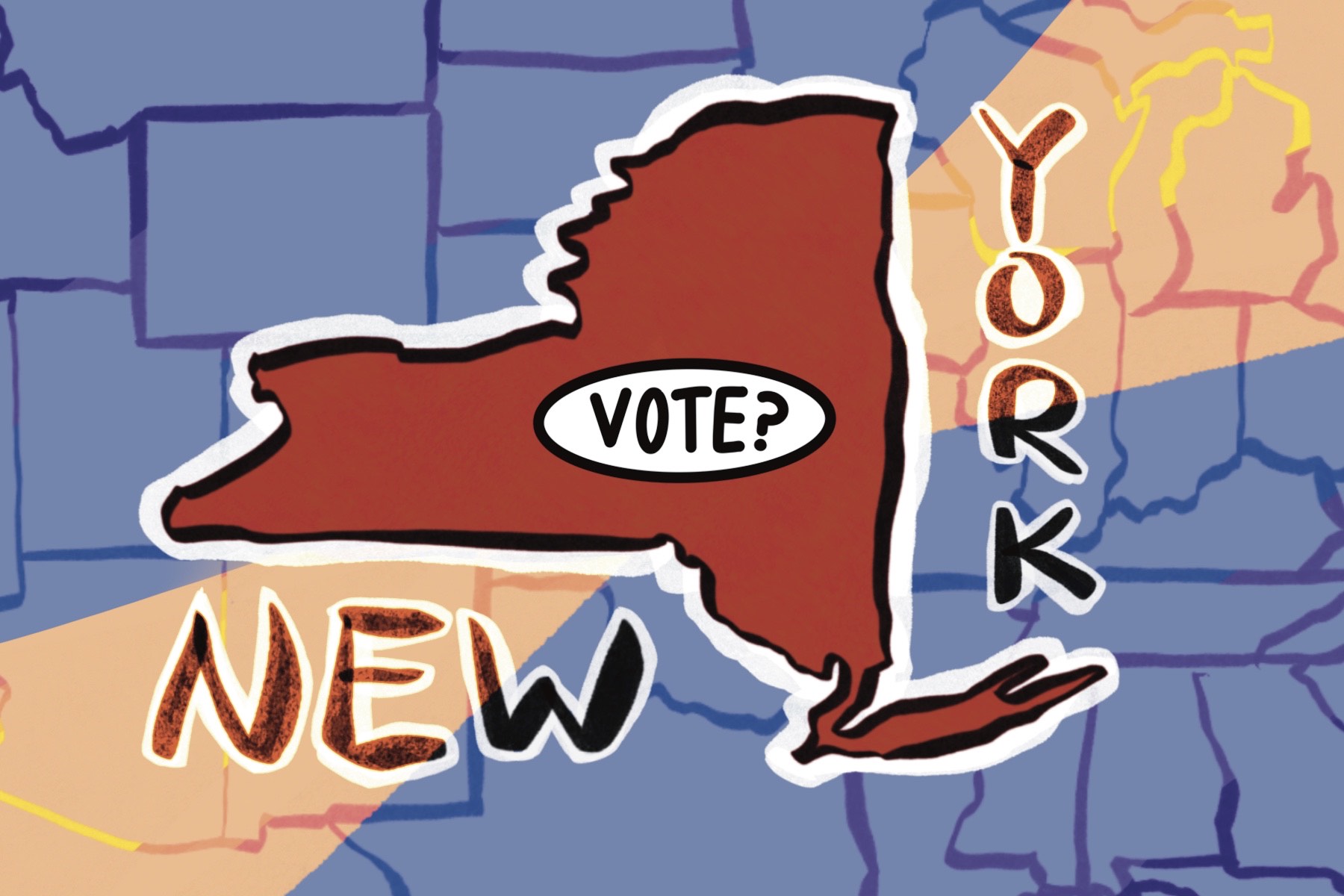Opinion: Strategic voting is the solution to the Electoral College
Under the Arch
Opinion: Strategic voting is the solution to the Electoral College
Students have the unique opportunity to choose where to vote between their home state and New York.
Grayson Stotz, Staff Writer | Oct. 28, 2024

A total of 538 electoral votes, 270 are required to win — yet there are just 93 that candidates seem to care about. Under the Electoral College, highly contested presidential elections are decided by only a handful of states, a limitation of the system that needs to be addressed.
The desire to move away from the Electoral College is not the minority opinion, nor has it been for a while. With electoral voters split into congressional districts and a winner-takes-all system for each district, a candidate winning the popular vote in a district wins every electoral vote in it. If, say, a candidate wins three out of the five votes in an electoral district, all five votes from the district are counted in their favor. Thus, the winner of the Electoral College vote does not necessarily represent the voter population.
This has been particularly contentious over the last few decades, especially considering the American public has seen a discrepancy between winners of the Electoral College and the popular vote twice in recent history: once with George W. Bush and Al Gore in 2000, and again with former President Donald Trump and Hillary Clinton in 2016. A Pew Research Center poll finds nearly two-thirds of Americans in 2024 are in favor of relying on the popular vote to select our president.
As an added bonus, swapping to the popular vote for presidential elections would force candidates to prioritize voter turnout across the nation, not just in swing states. Since voters are split into districts and some districts are almost guaranteed to vote for certain parties, as it stands, the Electoral College is more so about winning key swing states than motivating a nation of voters. This unfortunate fact is reflected in the campaign trails of both candidates as of March 2024, with candidates giving disproportionate attention to battleground regions. By utilizing a system that evaluates every vote as equal to the next, candidates can focus on proving themselves capable of running an entire country as opposed to a handful of battleground states.
While not the preferred method of selecting a commander in chief, we as college students have the unique opportunity to make the most of the Electoral College through strategic voting — choosing where to register to vote between your home state and New York based on where it will have the greatest impact.
At first glance, this decision appears simple. Considering the Democratic Party has won the state the last nine presidential elections — six of which with a margin greater than 20% — casting your vote in New York this November feels like you’re throwing it away, regardless of your preferred candidate. It feels like if you want to get the most out of your vote, you might be better off registering in your home state.
This decision is further solidified depending on where you’re originally from, and where your state falls on the political spectrum. Those hailing from swing states — Wisconsin, Michigan, Pennsylvania, Arizona, Nevada, North Carolina and Georgia — have the obvious choice of registering back home in hopes of tipping the scale.
ABC News’ 538 polling projects Trump leading in three of the seven swing states as of Oct. 24. Of these, his strongest lead is in Arizona by about 1.8 percentage points, a statistic that dwarfs Vice President Kamala Harris’ strongest of 0.7 percentage points in Michigan. That said, the margin of error for either candidate overlaps, meaning you can’t draw any solid conclusion about who will win considering the limitations of the data, and we won’t truly know what to expect until election night.
To add to the pool of strategic voting states, there are two exceptions to the all-or-nothing system under the Electoral College — Maine and Nebraska — which allocate their votes proportionally. While these outliers grub over the difference of one or two votes, it’s worth considering for an election as tightly contested as this.
For the remaining 41 states and the District of Columbia, not even strategic voting can save them, seeing as how the Electoral College system gives no priority to candidates who win by a greater margin, or mercy towards those who lose by a smaller one. As such, for students from these parts of the country, basing your registration off the presidential election might not be in your best interest. As easy as it can be to get caught up in the two biggest figures of the Democratic and Republican Parties, local elections still carry significant weight, and your vote might just be the deciding factor. Depending on where you register to vote, you also have the opportunity to throw your hat into the ring for crucial races such as the state’s gubernatorial, congressional and mayoral races. A strategic vote in your House district could affect the slim majority the Republicans currently hold over the Democrats. Or, if crucial issues like abortion are on the ballot in specific states, a vote back home can carry a lot more weight.
When considering the alternative of voting in your home state, it’s up to you to conduct the appropriate research to determine where you’re better off registering to vote and where your ballot carries the most weight. Ballotpedia provides state-specific election dates and information to make a better informed decision. Additionally, BallotReady allows you to input your home address and learn more about the candidates running in your district for the upcoming elections.
With the state of the nation, where presidential elections are decided not by which candidate receives the most votes, but rather by where those votes are located, it’s clear that not all ballots are weighed the same. While there may be no way around it, one can attempt to make the most of the system when choosing where to register. At the end of the day, whether you’re voting back home or right here in New York, and no matter the election, civic engagement should remain a top priority for those eligible to make their voice heard. Be sure to vote.
Contact Grayson Stotz at [email protected].

Grayson Stotz is a sophomore studying journalism and neural science at CAS. When he’s not splitting his time between two majors with no overlap, he’s...

























































































































































